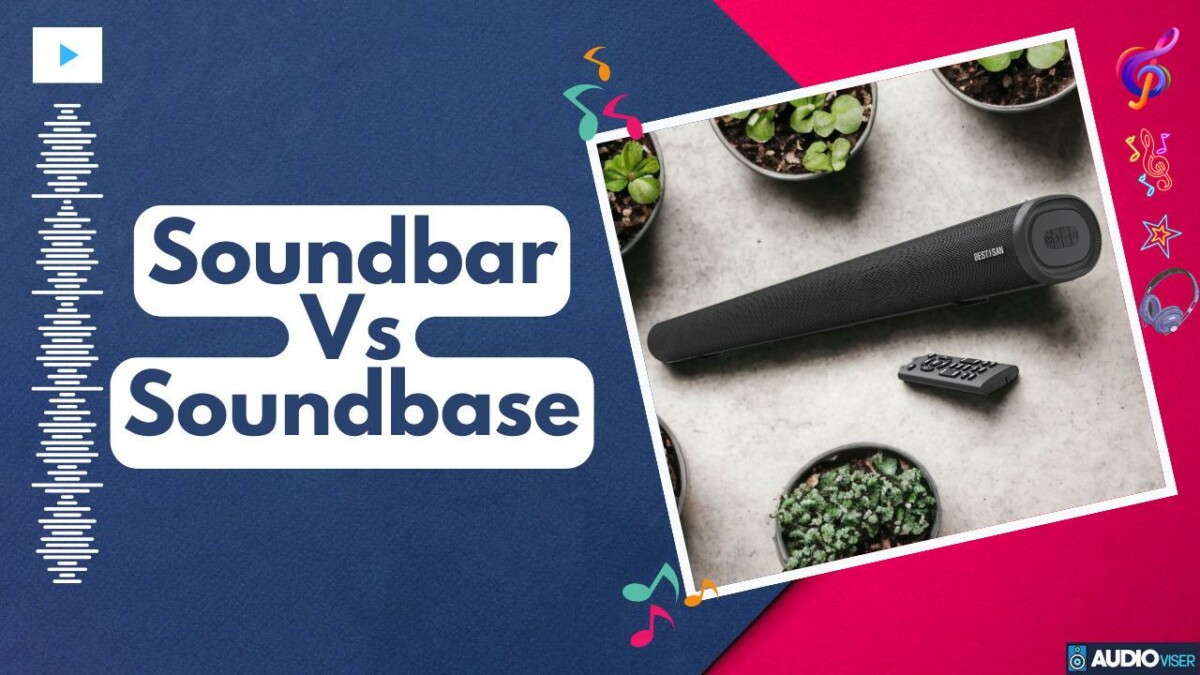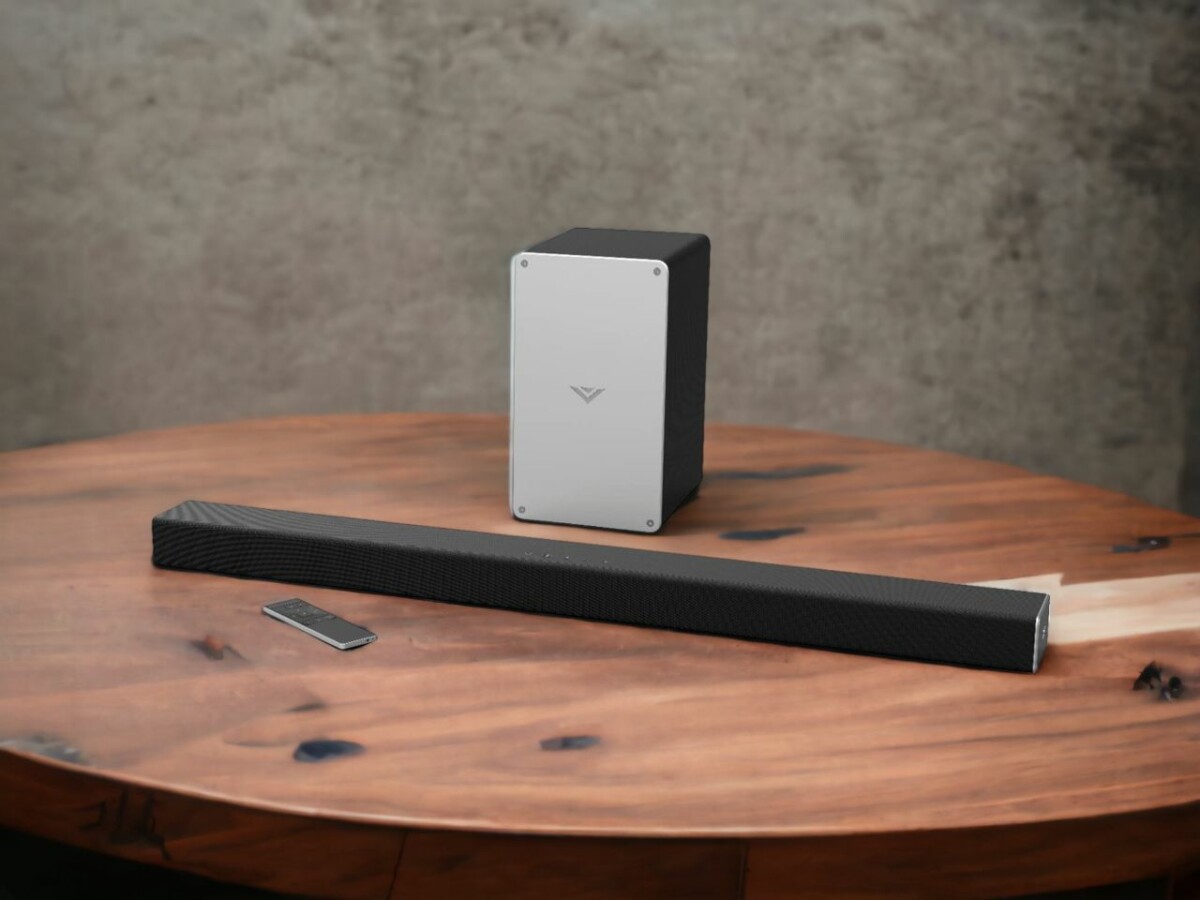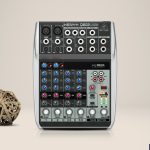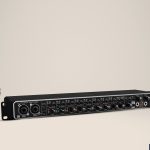
You’re stuck in a classic tech dilemma – soundbar or soundbase for your home theater? It’s a pretty common conundrum. There’s a lot of chatter out there, with everyone having their own two cents to add to the mix, leaving you more than a bit confused.
Let’s break it down, shall we? We’ll dive into the nitty-gritty of these two sound systems, looking at everything from their tech specs to real-life user experiences. We’ll talk dollar signs, audio quality, and even throw out a few brand names you might want to keep on your radar.
By the end of this, you’ll be able to take a stand in the ‘Soundbar vs Soundbase’ debate, and more importantly, you’ll have all the info you need to choose the right sound system for your ultimate chill out time.
Deciding Between a Soundbar and a Soundbase
Soundbars are slim speaker systems that sit either below or in front of your TV. On the other hand, soundbases are bulkier and designed as a platform for your TV. While both enhance your television’s audio, it boils down to your personal aesthetic tastes and available space.
Sound Bases can be a total game changer for those wanting to keep things simple and neat, especially when you’re dealing with a small space like a living room. They’ve totally got the edge when it comes to being compact, and you won’t have to worry about wires sprawling everywhere, which is a definite win.
But, let’s keep it real, they mightn’t fully deliver when it comes to the overall sound quality and that full-on surround sound feels that you get from traditional home theater systems.
When it comes to the richness and depth of sound, Sound Bases might fall a bit short compared to the big guns of traditional speaker setups. They’ve got built-in subwoofers that give you a decent bass, but don’t expect the same punch you’d get from a standalone sub.
Now, if you’re someone who’s just vibing out casually and mainly looking for convenience, Sound Bases could be your go-to. But, for those who are really into their tunes and want that top-notch, immersive audio experience, traditional speaker setups might be a smarter investment.
At the end of the day, it’s all about what sounds good to you, and your personal listening experience defines which way to go. It’s all about finding what hits the right note for you!
Unveiling the Limitations of Sound Bases and Soundbars
Even though they’re pretty handy, you’ll quickly find that both Sound Bases and Soundbars have their own drawbacks, messing with your audio vibes. When you pit the sound quality of sound bases against soundbars, you’ll spot a glaring difference. Despite their sleek design, soundbars pack a punch with their sound output, but they often drop the ball when it comes to belting out deep bass tones.
Switching gears to sound bases, their larger size gives them an edge, helping them belt out better bass. But they mightn’t hit the mark when it comes to achieving that stereo separation that you crave. The ups and downs of using soundbars for home theater setups usually revolve around these aspects.
On top of that, neither of these devices can truly nail the wide soundstage that a full-blown home theater system brings to the table.
At the end of the day, it’s all about your personal audio tastes and the layout of your room. These factors will steer you towards what works best for your setup. It’s all about finding that sweet spot between size, sound quality, and overall aesthetics!
Budgeting for Sound Bases: A Cost-Benefit Analysis
When you’re looking into getting a Sound Base, remember, they’re usually less of a hit to your wallet than going all out with a home theater. But don’t forget, it’s all about what works best for you. What sounds good to you and what fits in your space, right?
Let’s do a little side-by-side comparison on sound quality. Sound Bases vs separate speakers. Sure, Sound Bases are neat and compact, and they do a pretty decent job. But if you’re a real audiophile, you might find they don’t provide the same depth and clarity that you’d get from separate speakers.
And the kind of content you enjoy will also play a big role in your experience. If you’re into movies and TV shows, you’re probably going to think the Sound Base sounds awesome. But if music is more your jam, you might find it lacking a bit.
Next up, let’s talk about longevity and durability. Sound Bases are definitely all about making things easy for you. But remember, their simplicity could mean they mightn’t last as long as a traditional speaker setup.
Don’t forget to factor in how long your gear is going to last when you’re working out your budget. After all, you don’t want to be shelling out for new equipment every few years, right? Who’s got the time or money for that? So, it’s all about finding that perfect balance between cost and benefit.
Key Features to Consider in Sound Bases
When you’re on the hunt for the perfect sound base, it’s crucial to get a grip on the main features and how they can make or break the performance. If you compare sound bases and soundbars, you’ll probably notice that sound bases tend to have a more powerful bass. That’s because they’re generally bigger, but don’t expect them to be as good at producing high frequencies as soundbars.
If you’re a bass junkie, go for the sound bases that come with built-in subwoofers or at least a subwoofer output. That way, you can crank up the bass to your heart’s content and customize your own sonic experience.
But remember, it’s not all about the tech specs. The acoustics of your room play a huge part in the sound quality, too. So, don’t rush your decision and trust your ears – they’ll tell you what sounds best.
Brand and Model Recommendations for Sound Bases
If you’re on the hunt for some top-notch sound base brands and models, you’ve come to the right place. Let’s cut to the chase and talk about the big dogs in the industry. When you stack up sound bases against traditional home theater systems, a few names stand out from the crowd – Sony, Zvox, and Fluance.
Sony is a big player in the game, renowned for their super high-quality audio, but fair warning, their price tags aren’t for the faint-hearted. Take the Sony HT-XT2, for example. It’s quite a catch with its in-built subwoofer, but you’ll have to shell out a bit.
Now, if you’re all about simplicity and clear-as-day dialogue, then Zvox could be your jam. They’re a piece of cake to set up, and the sound clarity is off the charts. The Zvox SB500 is a prime pick, known for its ability to flood a room with sound.
On the other hand, if you’re watching your wallet but still want that killer sound, then Fluance might just be the ticket. The Fluance AB40, in particular, gets a lot of love for its broad soundstage.
If you’re really looking to crank up the sound quality from your sound base, it’s worth looking at models with tone controls and subwoofer output. Also, don’t forget to consider your room layout – make sure your TV stand can fit your chosen sound base comfortably.
Sound Artist
I’m a Sound Artist creating immersive sonic experiences. I turn everyday objects into music, turning the mundane into something marvellous!









